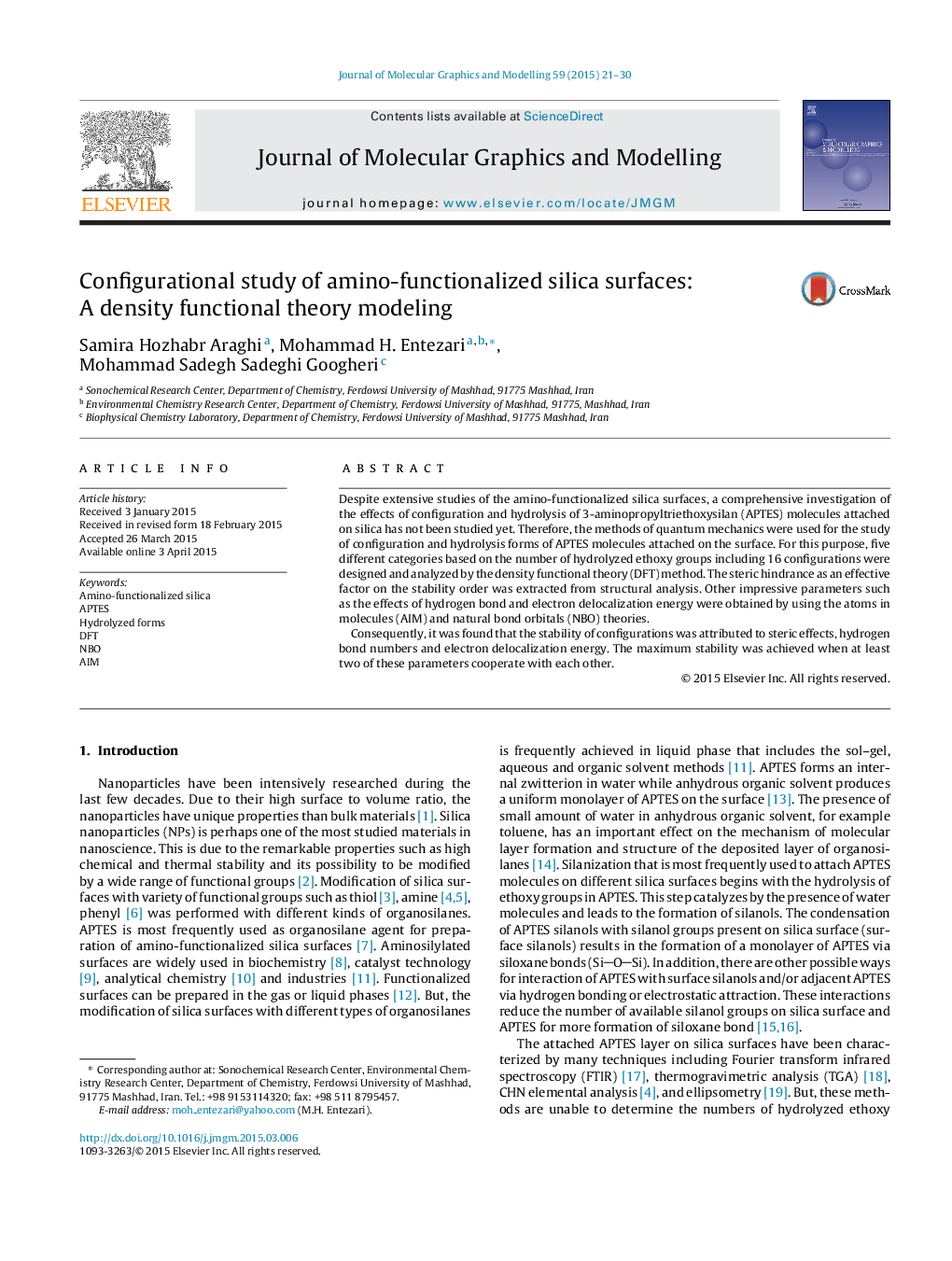| Article ID | Journal | Published Year | Pages | File Type |
|---|---|---|---|---|
| 443279 | Journal of Molecular Graphics and Modelling | 2015 | 10 Pages |
•The amino-functionalized silica surfaces were modeled by DFT calculations.•The hydrolyzed and nonhydrolyzed configurations were investigated.•The computational relative energies of different configurations were determined.•The effective parameters in the stability order were defined from AIM and NBO analysis.
Despite extensive studies of the amino-functionalized silica surfaces, a comprehensive investigation of the effects of configuration and hydrolysis of 3-aminopropyltriethoxysilan (APTES) molecules attached on silica has not been studied yet. Therefore, the methods of quantum mechanics were used for the study of configuration and hydrolysis forms of APTES molecules attached on the surface. For this purpose, five different categories based on the number of hydrolyzed ethoxy groups including 16 configurations were designed and analyzed by the density functional theory (DFT) method. The steric hindrance as an effective factor on the stability order was extracted from structural analysis. Other impressive parameters such as the effects of hydrogen bond and electron delocalization energy were obtained by using the atoms in molecules (AIM) and natural bond orbitals (NBO) theories.Consequently, it was found that the stability of configurations was attributed to steric effects, hydrogen bond numbers and electron delocalization energy. The maximum stability was achieved when at least two of these parameters cooperate with each other.
Graphical abstractFigure optionsDownload full-size imageDownload high-quality image (128 K)Download as PowerPoint slide
